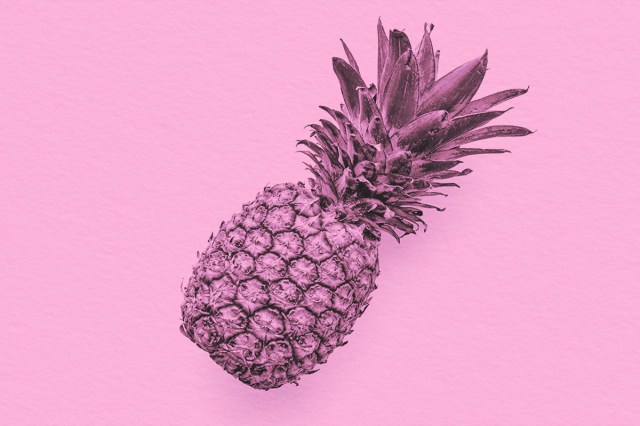
At the height of summer, a refreshing, tangy piece of fruit can satisfy a craving like no other. English speakers may cut up a pineapple to snack on. But for those who speak Finnish, French, Spanish, Turkish, Portuguese, and many other languages, the exact same fruit is called ananas (with some slight variations on spelling or accent marks). The name of this tropical fruit is a cognate in virtually every language except English — how did the outlier “pineapple” come about?
An early version of “pineapple” appeared in the late 1300s in Old English as pynappel, but etymologists have determined that reference was most likely referring to a pine cone. Until at least the 17th century, medieval botanists used the word “apple” as a generic term for any fruit other than berries, and it was used to create new words for any unknown fruit. For example, “pomegranate” comes from the Latin pōmum grānātum, meaning “seeded apple.” Hence, the round “fruit” from a pine tree was called a pineapple. You can see traces of this naming convention in modern French: pomme de terre (“potato”) literally translates to “apple of earth” in English.
It’s likely that the word “pineapple” developed from the slight resemblance between the scales of a pine cone and the scales of the fruit. We know the word was used in reference to the fruit by the explorer Captain John Smith in 1624 in the Generall Historie of Virginia. However, we also know that the word “ananas” was in use around the same time, because another explorer, Samuel Purchas, extolled the virtues of the delicious ananas in 1613. Two centuries later, both terms were still in use in English. In 1813, the gardener Thomas Baldwin wrote a guide about how to grow the plant and specified both names: Short practical directions for the culture of the ananas, or pine apple plant.
Despite the rest of the world settling on ananas, English speakers eventually landed firmly on the side of “pineapple.” The tides likely turned when James Dole opened a pineapple plantation in Hawaii in 1900, and Dole launched ad campaigns in magazines to spread the word about his crop.
The spiky tops and distinctive tangy flavor make the yellow fruit unmistakable, but if you ask for “pineapple” anywhere in the world outside of the Anglophone bubble, you’re going to get some confused looks. If this is your favorite fruit, make sure to remember to ask for ananas (which, by the way, is etymologically unrelated to “banana”).





















